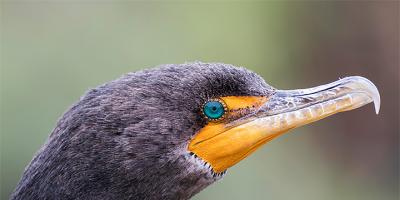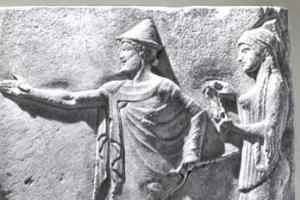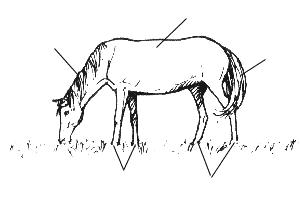Polar bear for children
 This article is dedicated to all the boys and girls who love bears as much as I do! Listed here are some interesting polar bear facts for kids.
This article is dedicated to all the boys and girls who love bears as much as I do! Listed here are some interesting polar bear facts for kids.
Polar bears are among the most majestic, beautiful and dangerous creatures on Earth. Those of you who have seen the film The Golden Compass will remember Iorek Burnison, Prince polar bears. Although Iorek speaks in the movies, real polar bears do not, at least not in the Queen's English or any other human language! Real polar bears are less cruel, much friendlier than Iorek, but just as strong and brave as he is. In this article I have collected some amazing facts for children about polar bears. Every fact about polar bears is unique and incredible. Be prepared to be amazed by the life and times of polar bears.
Interesting Facts about the polar bear for children
Polar bears are known by the scientific name Ursus Maratimus. The Inuit call polar bears "Nanuks". Today, there are approximately 20,000 to 25,000 polar bears worldwide. Here are the promised facts about polar bears for children, presented in order of increasing surprise!
The Arctic is my home!
Polar bears live near the North Pole, above the Arctic Circle, which is one of the coldest places on Earth. They live on sheets of ice and cold earth located around the Arctic Circle. They live in coastal Alaska, Canada, Russia, Norway and Greenland. Normal temperature in these regions it is minus 55 degrees Celsius and the wind here blows at an average speed of 48 kilometers per hour! Read more about this in the section “Where do polar bears live?”
I love swimming!
Polar bears are champion swimmers! They can swim at a speed of 9.5 kilometers per hour in sea water, with negative temperatures. None of our gold medal swimmers would stand a chance against polar bear. Polar bears are known to swim 160 kilometers non-stop, quickly, sometimes relying on ice sheets.
I'm a giant!
Polar bears are the largest bears on earth. Newborn bears are small like rats, but when they start to grow, they stretch three meters in height and weigh more than 635 kilograms! They are one of the largest predators on Earth. Polar bears live up to 25 years, with a maximum of 30.
I have thick fur!
Now you might be wondering how polar bears were able to stay warm and alive in these temperatures. The reason is a thick layer of subcutaneous fat. It acts as a layer of insulation that protects them from the cold, helping them maintain body temperature.
Seals are delicious!
What do polar bears eat that helps them grow to such enormous sizes? They hunt seals, fish, deer and birds. They can sit in an ice hole for several hours to pounce on seals. Sometimes they even eat whale meat. In the summer they switch to a vegetarian diet and eat berries. They are the kings of the Arctic Circle, unparalleled in their strength and endurance.
I have a sensitive nose!
Polar bears have a very keen sense of smell that can smell prey such as seals even 20 kilometers away or one meter below the ice.
My fur reflects white!
Now, the next one of the most interesting polar bear facts for kids is that the polar bear's fur is not white, although it may seem so! Every hair in a polar bear's fur is actually transparent. The fur appears white because it reflects the white color of the ice. The polar bear's fur is oily and repels water, so it can easily stay dry.
My house is melting! Help!
Global warming is having a negative impact on polar bears; the sheets of Arctic ice that serve as their floating homes and hunting grounds are melting very quickly. Polar bears are also valuable to humans for their meat. Today they are classified as vulnerable animals. Read more about this in the article “Polar bears are endangered.” As you can see, each of the facts about polar bears is not comparable to any other animal on Earth. The polar bear is adapted to survive in Arctic and water conditions. We hope these interesting polar bear facts for kids have left you in awe of these majestic creatures of the ice.
Guzel Abdullina
Ecology lesson notes “What do we know about the polar bear” (senior group)
Prepared: teacher senior group MBDOU No. 22 Abdullina Guzel Inkarovna, Leninogorsk, RT.
Target:
Give children knowledge about polar bear: appearance, lifestyle, habits and methods of hunting in winter and summer.
To form ideas about the way of life of animals at the North Pole, about adaptation to their habitat.
Develop search abilities.
Continue to introduce children to white people bears, the ability to adapt to the environment.
Activate speech through games and exercises.
Form an interested, caring attitude towards whites bears.
Vocabulary work: Dictionary enrichment words: "Arctic", "predator"; activation dictionary: "prey", "wool","paws", "den", "seal", "tyulenina".
Preliminary work:
Reading and looking at illustrations about whites bears in a wildlife magazine; watching a cartoon "Umka"; listening to audio recordings "Lullaby she-bear» (from the cartoon "Umka"): looking at paintings depicting white people bears; painting with white stencils bears.
Materials for classes: multimedia; globe; animal illustrations (brown and white bears) ; notebook; pen; envelope.
Progress of the lesson:
(Children play in the play corners, there is a knock on the door. The teacher goes to Vera and brings an envelope in his hands.)
Guys, look here, we received a letter, let's look into the envelope to see what's inside.
(takes out a letter and a card with a riddle)
They sent us a letter, but in order to find out who it is from, we must guess riddle:
Floating on the blue sea
On a huge ice floe
Strong, predatory beast
In a fur coat snow-white.
Who do you think it is? (children's answers)
Well done, right. Well, let's read the letter. (opens the letter)
"Hello children! White is writing to you bear. I want to tell you about myself, about whites bears. In the north, in the Arctic, where there is only snow and ice, we whites live the Bears. Our habits are similar to the habits of brown bears: We spend the winter in a den made of ice and snow, we love to swim and fish. Ursa Our babies are first fed milk, and when they grow up, they are fed fish and seal meat.
We are adapted to life in difficult conditions: we have thick, warm fur, including on the soles of our paws - it saves us from frost, the white camouflage color of our fur makes us invisible in the snow, we know how to dive and swim well, hide, quietly sneak up on prey, we have strong paws with sharp claws, claws help us quickly and deftly catch fish in the water, and we have strong teeth. I would also like to add, we, the whites the Bears, are included in the Red Book.
We would like to become friends with you, we are waiting for a response letter from you. Best regards, White bear.»
This is the letter we received. Let us find the Arctic on the globe. Where is he located? Let’s look for him.
(they search together and find)
This turns out to be where the Arctic is! In the Arctic there is snow and ice all around, which is why it is marked white on the globe.
Now let's look at the illustrations bears: white and brown. See how they are similar and how they differ. (children's answers)
Where does he live? (children's answers)
What saves him from the cold? (children's answers)
Can he swim? (children's answers)
How does he get his food? (children's answers)
What helps him hunt? (children's answers)
What does he feed? mother bear cub? (children's answers)
Yes, that’s right, she feeds the baby milk, then when he grows up, fish and seal meat. Seal meat is called seal meat. Bears hunt them too.
Now let's play a game with you « Bear cubs»
Bear cubs in the thicket they lived, running and turning their heads
They turned their heads.
Like this (2 times)- They were turning their heads.
The cubs were looking for honey. Perform movements for
Together the teacher rocked the tree. (They are looking for honey and
Like this (2 times)- They rocked the tree together. the trees are shaking.)
The bear cubs drank water(Imitation movements)
They followed each other. drink some water and walk around
Like this (2 times)- friend.
Everyone followed each other.
The cubs were dancing(Imitation movements)
They raised their paws up, stomped in place and
Like this (2 times)- They raised their paws up. raise their hands up.
Well done, had a great game!
Now, let's write a response letter to the whites bears.
Address: Arctic, Country eternal ice and snow, a large snowdrift.
To whom: To the polar bear.
Hello dear White bear!
We have received your letter. Thank you, thanks to you we learned who the whites are bears where they live.
Come visit us from the distant Arctic! We'll treat you delicious fish. Are looking forward to!
If you can’t come to us, we are waiting for a letter from you.
With respect to the whites bears for older children kindergarten No. 22 Leninogorsk, RT.
Now let's seal the envelope and all that remains is to send the letter. We'll go home in the evening, put it in the mailbox and wait for an answer.
And on class drawing we will draw whites bears using a sponge, foam rubber. We will organize an exhibition “The Arctic, the distant land of eternal ice.”
Today the world celebrates International Polar Bear Day, or in the more familiar Russian version, Polar Bear Day. Polar bears have existed for more than 200 thousand years, and it is known that there were several times more of them than there are now. They are believed to have originated from brown bears, which were separated by glaciers near Siberia. In order to adapt to new conditions, their bodies underwent evolutionary changes, and they finally began to look the way they look today. Now the habitat of polar bears is the entire Arctic region in the circumpolar regions of the North. Here are some interesting facts about this wonderful animal.
1. Polar bears are the world's largest land predators, tied for first place with the Kodiak bear. The weight of adult males can reach from 250 to 770 kilograms, and the length (from nose to tail) is 2.5-3 meters. Adult females are half the size: 90-300 kg and 1.8-2.5 meters, respectively.
2. Despite what you see in photographs, polar bears are not at all white. Their fur is colorless because the hairs are hollow and transparent. They reflect light and appear white. Under the fur lies black skin, which is necessary for better absorption of solar heat.
3. Only pregnant females go into long winter hibernation (up to two months or longer). And males continue to hunt throughout the winter.
4. Scientific name polar bears – Ursus Maritimus (translated from Latin as “sea bears”).
5. Newborn polar bear cubs are much smaller in size than newborn human children. Their weight is about 500 grams and their height is 30-35 centimeters.
6. Although temperatures in the Arctic can drop to -45°C, polar bears usually have problems not with freezing, but with overheating. Especially while running. And all this is due to the physiological characteristics of the bear, which are responsible for maintaining heat. Therefore, bears prefer to move slowly and steadily.
7. Polar bears are excellent swimmers. Thanks to the structure of their paws, they swim gracefully and quite quickly. average speed is 10 km/h. And it won’t be difficult for bears to swim 161 kilometers without stopping. When swimming, polar bears use their large front paws to propel themselves through the water and their hind paws to steer. By the way, they spend so much time in the water that some scientists classify these animals as marine mammals.
8. Polar bears have an excellent sense of smell. They can smell a seal 32 kilometers away.
9. When bears curl up to sleep, they cover their noses with their paws to keep warm.
10. Polar bears are big clean people. After eating, they spend about 20 minutes cleaning themselves. They need to make sure that there are no food residues left in the wool that could reduce it thermal insulation properties.
11. It is known that polar bears can be subject to outbursts of anger. More than once the bear was seen throwing huge chunks of ice and growling loudly in despair after a failed attempt to grab its prey.
12. Only the polar bear is a predator. All other bears are omnivores.
13. If there is not enough food for them during the cold season, polar bears can starve for several months. This is their natural ability used for survival.
14. Polar bears are the only species of bear that is a marine mammal.
15. Polar bears have 9,677 hairs per square inch.
16. While most bears have bare feet, polar bears' feet have fur on the bases and between the toes. This is necessary to reduce heat loss on cold ice.
17. Polar bears are solitary animals. The exception is the period when they are ready to mate.
18. Thanks to the rough surface on the pads of their paws, polar bears do not slide on the ice.
19. The polar bear has 42 teeth.
20. Due to their adaptation to cold weather, polar bears may become extinct in the event of global warming. Man-made greenhouse gases are heating the Earth, causing the ice to melt, threatening the polar bear population.
21. There are 19 species of polar bears in the world, identified and classified by scientists. Currently, 5 of them are on the verge of extinction.
22. The most favorite food of polar bears are ringed seals, but in winter predators eat everything they can catch. In summer, they feast on berries, leaves and algae.
23. An adult polar bear usually eats one seal every 6-7 days.
24. Having given birth to their cubs on land, polar bears then spend the majority of their lives in the water. Most people mistakenly believe that polar bears are land animals, even though they are classified as marine mammals.
25. For a long time, there was a common myth that polar bears are left-handed. Scientists have not yet answered this question, and it is unlikely that an answer will ever be found. Bears use both paws to both grab their prey and dig. Unlike humans, they do not use only one hand.
26. Despite the fact that northern bears have a reputation as fearsome hunters, their hunting success rate is less than 2%. Polar bears, the most carnivorous of the bear family, expend a lot of energy while hunting. The time and energy they spend searching for food only increases over time as Arctic sea ice disappears and it becomes increasingly difficult for the animals to find their prey (mostly seals). Polar bears can eat more than 25 kilograms of meat in one sitting.
27. Habitats of polar bears: Russia, Canada, USA, Greenland, Arctic islands of Norway.
28. On average, polar bears live 17 years in the wild.
29. Female bears rarely give birth, once every two or three years. One litter can have up to three cubs.
30. The only living creatures that threaten bears are people.
And finally, a riddle:
Why don't Polar Bears eat Penguins?
The answer? the bear lives at the North Pole, and the penguin at the South Pole.
Swim, far away :)
Based on materials from lifestripes.ru and zooblog.ru
The polar bear is one of the largest predators living on land. Its height at the withers (from the ground to the neck) is 1.5 m, the foot size is 30 cm in length and 25 in width; Male polar bears weigh 350-650 kg, some even more, females 175-300 kg. A bear lives 15-18 years.
Polar bears live in the Arctic - at the North Pole.
The color of the fur is from snow-white to yellowish, thanks to this the bear is almost invisible in the snow, but the polar bear’s skin is black, but it is not visible through the thick fur, except very slightly on the nose. Polar bears are very resilient and can cover long distances at a brisk pace. Their feet are covered with fur, which gives them greater stability when moving on ice and snow. Polar bears can run, but they usually walk.
Polar bears are excellent swimmers; they jump into the water head first or slide off an ice floe, and swim using their front paws. They dive with closed nostrils and open eyes. They know how to fish. After coming ashore, they immediately shake off the water.

White bears most spend years on ice-bound shores along the coast. As a rule, they hunt alone. They search for food both day and night. Polar bears hunt seals by lying in wait at holes through which the seals breathe air, or by approaching animals lying on the ice. Polar bears have a very sensitive sense of smell. They are able to smell seals lying in a shelter under the snow.
These animals are very curious and intelligent. While tracking a seal, a polar bear covers its black nose with its paw, blocks the prey's escape route, or even pretends to be an ice floe floating by. A bear can experience emotions from rage to joy: after a successful hunt and a hearty lunch, he sometimes begins to frolic like a kitten.

In winter, when there is severe frost and polar night, the bear can hibernate. The she-bear also lies down for the winter in an ice den along with her cubs. For five months she does not eat any food and at the same time feeds the born cubs, usually two, with milk. The cubs, covered with sparse whitish fur, are born helpless, blind and deaf, no larger in size than newborn kittens. Their length is 17-30 cm, and their weight is 500-700 g.
In summer, bears' food is more varied: small rodents, polar foxes, ducks and their eggs. Polar bears, like all other bears, can also eat plant foods: berries, mushrooms, mosses, herbs.
There are not very many polar bears left on earth and hunting for them is limited.
The message about the polar bear can be used in preparation for the lesson. A story about a polar bear for children can be supplemented with interesting facts.
Report on the topic “Polar bear” 4th grade
The polar bear is one of the largest predators on Earth. These are inhabitants of the harsh and snowy expanses of the Arctic zone; their southern border of habitat is the tundra zone.
Description of a polar bear
The polar bear has a heavy, massive body and large, powerful paws.
Its weight ranges from 300 to 800 kg, and its length can reach up to three meters. The color of the fur coat can range from white to yellowish. In summer, the fur may turn yellow due to constant exposure sunlight. Wool stores subcutaneous fat and protects well from the cold, so animals do not freeze either on land or under water. The tail of a polar bear is very short, ranging from 7 to 13 cm in length and is almost invisible under its dense fur.
Interestingly, the bear’s skin under its fur is black, as is its nose.
Their feet have an unusual elongated shape, which allows them not to fall under the snow and cover distances of 30 kilometers. Thanks to the partitions between the toes, animals swim well and hunt underwater.
What do bears eat?
They feed on fish, seals, and sometimes baby walruses. Bears can go without food for a long time, but when they catch prey, they eat up to 10 kg of meat at a time. In summer they can eat plants. Predators are very agile, despite their enormous weight and thick skin. They have a well-developed sense of smell and vision. They can see and smell their prey from kilometers away. And having tracked down the prey, they stun it with a blow of their paw.
Polar bear lifestyle
Basically, these animals are solitary, but in the spring they pair up to create offspring. In small families they explore new territory, but do not stay there for long. While carrying cubs, female polar bears almost never leave their shelter and lose 2 times their weight. After the birth of babies (usually one or two), the bear spends several more months with them in a specially dug den, because they are not yet adapted to the cold. Newborn cubs are taught by their mother to hunt and survive in difficult conditions.








